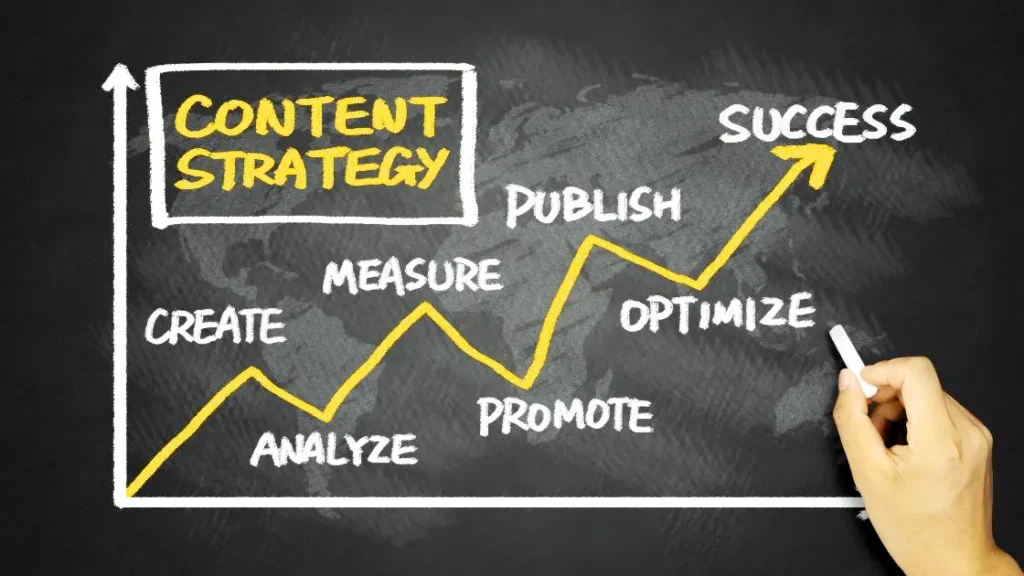G’day folks! Alex here, your friendly neighbourhood web dev, dropping in with another post for Meta Trends. Today, we’re tackling a crucial but often overlooked aspect of content marketing – how to measure whether all those long hours you poured into crafting killer content are paying off. I know tracking metrics can seem tedious, but it provides precious insights into what’s working and where there’s room for improvement. Let’s break it down!
Defining Your Goals and KPIs
You can’t track your progress if you don’t know what you’re aiming for in the first place. Before creating any content, clearly define your goals and establish Key Performance Indicators (KPIs) – measurable values used to gauge the performance of your campaigns.
Some examples of SMART content marketing goals include:
- Boosting organic traffic by 25%
- Increasing leads generated from content by 30%
- Achieving 5+ backlinks from authority websites
Once you’ve set your targets, determine the KPIs you’ll track for each goal – impressions, traffic sources, backlinks, conversion rates, etc. This helps align your efforts for maximum impact.
Pro tip: Set up tracking early so you have baseline metrics against which to measure progress!

Choosing the Right Analytics Platform
Now comes the fun bit – picking the tools to monitor those all-important numbers! My top recommendation is good old, reliable Google Analytics. It’s free, packed with features, and integrated with most websites.
Some key reports I analyse regularly:
- Acquisition > Traffic Sources: Uncover the channels bringing in your visitors
- Behavior > Site Content > Landing Pages: See which pages attract your audience
- Conversions > Goals: Track progress towards your targets
Other fantastic options include:
- SEMrush for in-depth SEO analytics
- BuzzSumo to find viral content opportunities
- Hotjar to understand user behaviour
Set aside time each week or month to review your data and identify potential improvements. Remember – analytics are meant to inform decisions, not just collect dust!
Optimising for User Engagement
An engaged reader is likelier to convert into a lead, share your content, or return for more. So, how can you keep those fickle visitors hooked?
Interactive Content
Involve your audience by including the following:
- Quizzes and assessments
- Calculators
- Polls and surveys
- Interactive images
Social Sharing
Add share buttons for:
Comment Section
Don’t forget the humble comments section! It encourages discussion and surfaces questions you can address in future content. Moderate frequently to build community.

Calls-to-Action
Strategically placed CTAs guide visitors to convert through:
- Email sign-up
- Downloading offers
- Booking demos
Test different placements, copy variations and designs.
Compelling Visuals
Well-chosen images, data visualisations, infographics and videos can vastly improve time on page, social shares and clicks.
Try featuring visual content readers can engage with. For example, an interactive calculator for potential cost savings.
Tracking SEO and Content Performance
As a dev working in WordPress, I know first-hand how crucial SEO is for driving traffic and visibility. But how exactly can you evaluate the search engine performance of your content marketing?
Monitor Rankings and Links
Use tools like SEMrush and Ahrefs to track:
- Rankings for target keywords
- Total backlinks and domain authority over time
- Competitor benchmarking
This indicates how well your content penetrates the SERPs and earns trust signals.
Analyse Search Traffic
Google Analytics breaks down visitors from organic vs paid search.
Compare metrics pre and post-content launch, including:
- Overall, organic users and sessions
- Pages per session
- Bounce rates
- Goal conversions
Sudden ranking spikes are often reflected in search traffic as well.
Optimise Low-Performing Pages
Find underperforming pages by sorting your site content report in GA based on time on page, exits or bounce rate.
Identify opportunities to improve pages through:
- Adding more media
- Enhancing topic relevance
- Improving page speed
Rinse and repeat testing to maximise search visibility!

Calculating the ROI of Your Content
Spending 35% of your content marketing budget creating stellar content doesn’t mean much if you can’t determine the return on that investment.
Here’s a simple formula you can use:
Content Marketing ROI = (Revenue Attributed to Content – Cost of Content) / (Cost of Content)
This can be challenging to measure accurately, but here are some steps to follow:
- Establish values for key conversion events (e.g. ebook download = $50 potential value)
- Track revenue from sales or leads generated from each content piece
- Calculate the cost of production, distribution and promotion
- Factor in brand awareness value
- Input figures into the ROI formula
- Assess performance and make optimisations
Positive ROI communicates content contributing towards financial gains. If not, find ways to enhance conversion rates or lower costs while maintaining quality.
Wrapping Up
Phew, measuring marketing success certainly takes effort! But the insights you unlock allow for continual refinement that drives business growth. I recommend investing in analytics tools that suit your needs. And don’t forget to track metrics tied to your original goals – that’s the true mark of content prosperity!
What key metrics do you use to gauge content performance? What tools can’t you live without? Join the conversation below!
